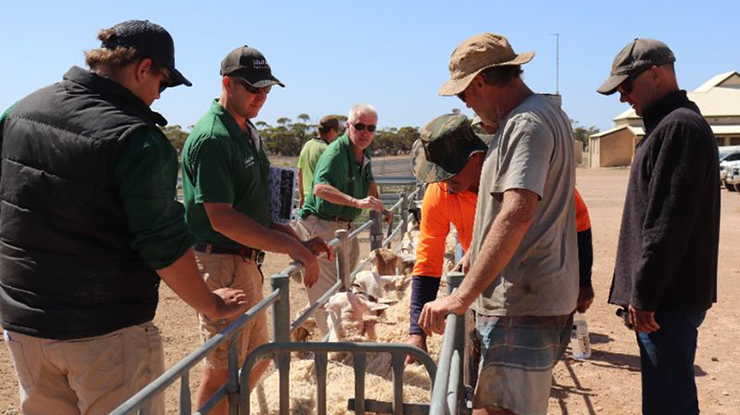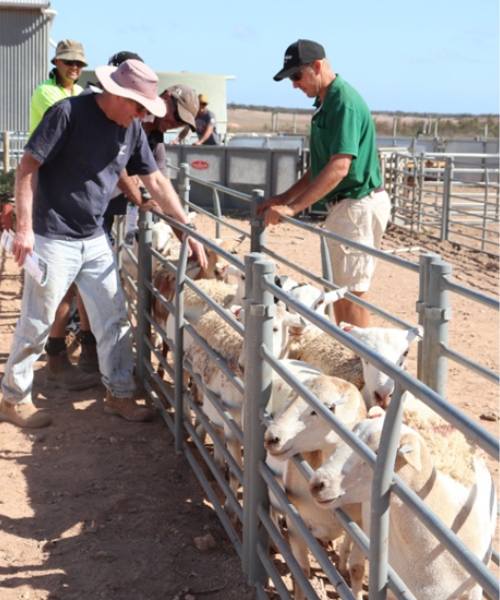 Members of the Far West Eyre Peninsula Dorper Breeders group practicing/learning about condition scoring Dorper ewes from Daniel Schuppan of Nutrien Ag Solutions as part of the Maximising Dorper Reproductive Performance PDS project.
Members of the Far West Eyre Peninsula Dorper Breeders group practicing/learning about condition scoring Dorper ewes from Daniel Schuppan of Nutrien Ag Solutions as part of the Maximising Dorper Reproductive Performance PDS project.
Key points:
- Results from a Producer Demonstration Site (PDS) have shown that certain management strategies can increase marking rates by almost 40% in Dorper flocks.
- Monitoring ewe condition score, feeding according to nutritional needs and providing sufficient recovery time before re-joining were key drivers of the productivity improvements recorded throughout the project.
- All producers who took part in the PDS used the findings to change their management strategy to improve profitability.
- Applications for the 2023/2024 PDS projects open 3 April.
In an effort to address declining lambing percentages in local flocks, a group of Dorper producers on SA's far-west coast participated in a Meat & Livestock Australia-funded Producer Demonstration Site (PDS).
Throughout the three-year project, the group trialled several management practices to boost the reproductive performance of their flocks.
Examples of the practices trialled by participating producers include (but aren't limited to):
- condition scoring of ewes at key times in the reproductive cycle (including pre-joining to ensure ewes have had sufficient time to recover from previous lambing), aiming for a score of 4 or above
- pre-joining assessment of rams
- scanning for lamb numbers (singles or multiples)
- differential management strategies of ewes based on pregnancy status
- assessing udder soundness and monitoring udder health
- weaning lambs at optimum time
- feed budgeting.
Turbo-charging reproductive performance

For White Dorper producer Ben Polkinghorne, implementing the practices trialled in the PDS had clear benefits – over the past three years, his flock's conception rate increased by almost 30% and the marking rate rose by almost 40%.
"The key practice that ultimately helped lift the overall flock marking rate from 99% to 137% across the course of the project was monitoring ewe condition score and feeding appropriately," Ben said.
Although Ben already scanned for multiples prior to the PDS, introducing the practice of differential feeding for single and multiple bearing ewes reaffirmed the importance of customising feed requirements according to nutritional needs. It also illustrated the impact of the extra demand from twin lambs on ewe body condition score.
A good condition score is essential for effective joining, so Ben wanted to make sure ewes had plenty of time to recover post-lambing before they were joined again.
"One of the key changes we've made is to bring forward our weaning date so that the ewes have more time to recover and get back into good condition for joining."
Changes for future management
At the conclusion of the project, 100% of the participating producers indicated that they had already adopted the majority of the management practices identified in the PDS, or that they intended to.
A full copy of the project report will be available on the MLA website in the near future.






